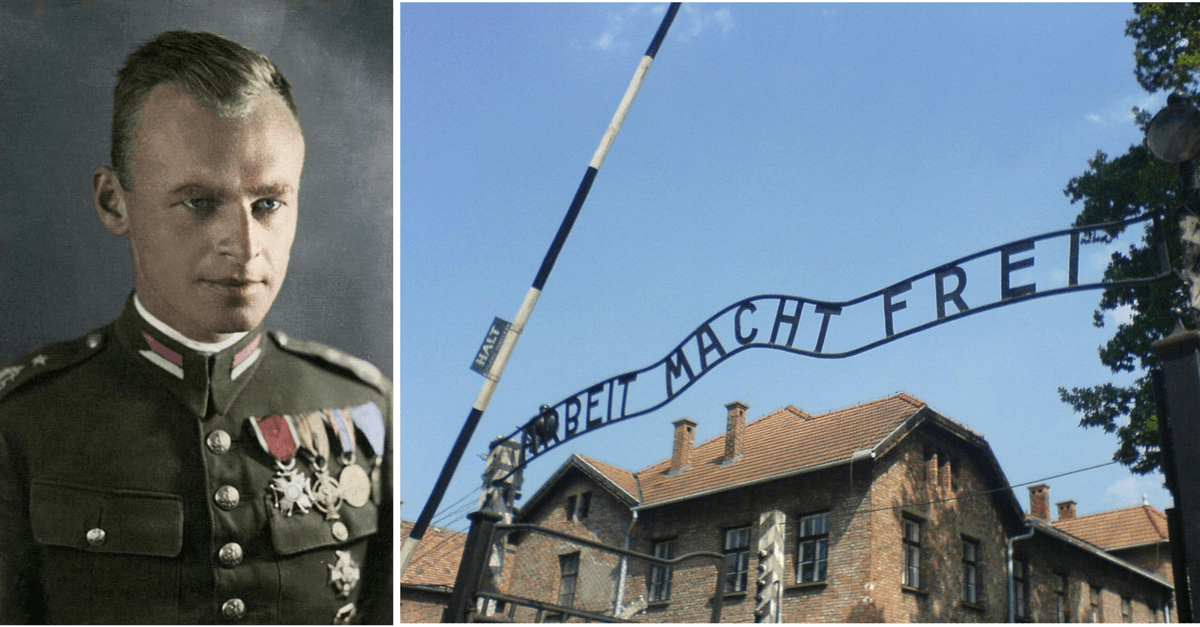
SHARES
| FacebookTwitter |
 Witold Pilecki in 1939 Source
Witold Pilecki in 1939 SourceWitold Pilecki was a Polish soldier, a rittmeister of the Cavalry during the German invasion of Poland, the founder of the Secret Polish Armyresistance group in German-occupied Poland in November 1939, and a member of the underground Home Army, which was formed in February 1942.
As the author of Witold’s Report, the first intelligence report on Auschwitz concentration camp, Pilecki enabled the Polish government-in-exile to convince the Allies that the Holocaust was taking place.
Going into Auschwitz
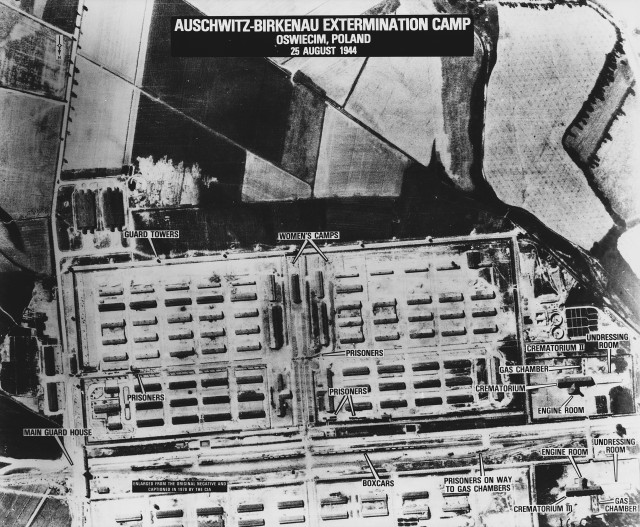 American surveillance photo of Birkenau (1944). South is at the top in this photo. Source
American surveillance photo of Birkenau (1944). South is at the top in this photo. SourceIn 1940, Pilecki presented to his superiors a plan to enter Germany’s Auschwitz concentration camp, gather intelligence on the camp from the inside, and organize inmate resistance. Until then, little had been known about the Germans’ running of the camp and it was thought to be an internment camp or large prison rather than a death camp. His superiors approved the plan and provided him with a false identity card in the name of “Tomasz Serafiński”. On 19 September 1940, he deliberately went out during a Warsaw street roundup and was caught by the Germans, along with some 2,000 innocent civilians. After two days detention in the Light Horse Guards Barracks, where prisoners suffered beatings with rubber truncheons, Pilecki was sent to Auschwitz and was assigned inmate number 4859.
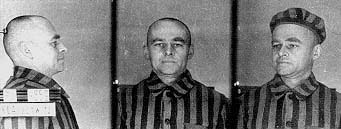 Auschwitz concentration camp photos of Pilecki (1941). Source
Auschwitz concentration camp photos of Pilecki (1941). SourceAt Auschwitz, while working in various kommandos and surviving pneumonia, Pilecki organized an underground Union of Military Organizations (ZOW in Polish). Many smaller underground organizations at Auschwitz eventually merged with ZOW. ZOW’s tasks were to improve inmate morale, provide news from outside, distribute extra food and clothing to members, set up intelligence networks, and train detachments to take over the camp in the event of a relief attack by the Home Army, arms airdrops, or an airborne landing by the Polish 1st Independent Parachute Brigade, based in Britain.
ZOW provided the Polish underground with invaluable information about the camp. From October 1940, ZOW sent reports to Warsaw, and beginning in March 1941, Pilecki’s reports were being forwarded via the Polish resistance to the British government in London. In 1942 Pilecki’s resistance movement were also broadcasting details on the number of arrivals and deaths in the camp, and the inmates’ state and their conditions using a radio transmitter that was built by camp inmates. The secret radio station, built over seven months using smuggled parts, was broadcasting from the camp until the autumn of 1942 when it was dismantled by Pilecki’s men after concerns that the Germans might discover its location because of “one of our fellow’s big mouth”.
These reports (Witold’s Report) were a principal source of intelligence on Auschwitz for the Western Allies. Pilecki hoped that either the Allies would drop arms or troops into the camp or that the Home Army would organize an assault on it from outside. Such plans, however, were all judged impossible to carry out. Meanwhile, the Gestapo redoubled its efforts to ferret out ZOW members, succeeding in killing many of them. Pilecki decided to break out of the camp, with the hope of personally convincing Home Army leaders that a rescue attempt was a valid option. When he was assigned to a night shift at a camp bakery outside the fence, he and two comrades overpowered a guard, cut the phone line and escaped on the night of 26/27 April 1943, taking with them documents stolen from the Germans.
After Auschwitz
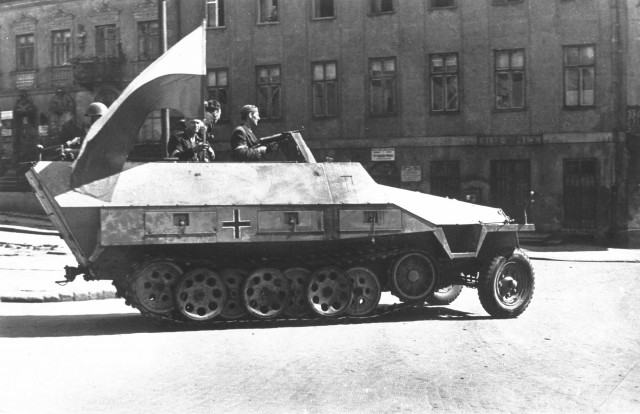
Captured German Sd.Kfz. 251 from the 5th SS Panzer Division Wiking, and pressed into service with the 8-th “Krybar” Regiment. Source
After he escaped from the camp he joined up with the he took part in the Warsaw Uprising in August 1944. At first, he fought in the northern city center as a simple private, without revealing his actual rank. Later, as many officers fell, he disclosed his true identity and accepted command. Miraculously surviving this and being taken prisoner, he spent the rest of the war in German prisoner-of-war camps.
When liberated he remained loyal to the London-based Polish government-in-exile and, refusing to leave Poland, he kept gathering intelligence on Soviet atrocities in Poland. He was captured in May 1947, severely tortured and put on a show trail where we was sentenced to death.
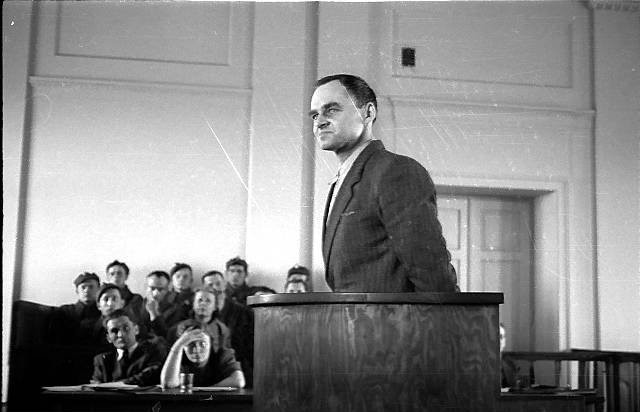 Pilecki the court (1948). Source
Pilecki the court (1948). SourceHis final words before his execution at the Rakowiecka Prison in May 1948 were “Long live free Poland”. Pilecki’s place of burial has never been found but is thought to be somewhere within Powązki Cemetery.
Until 1989, information on his exploits and fate was suppressed by the Polish communist regime.
Witold Pilecki and all others sentenced in the staged trial were rehabilitated on 1 October 1990. In 1995, he received posthumously the Order of Polonia Restituta and in 2006 he received the Order of the White Eagle, the highest Polish decoration. On 6 September 2013, he was posthumously promoted by the Minister of National Defence to the rank of Colonel.

Δεν υπάρχουν σχόλια:
Δημοσίευση σχολίου